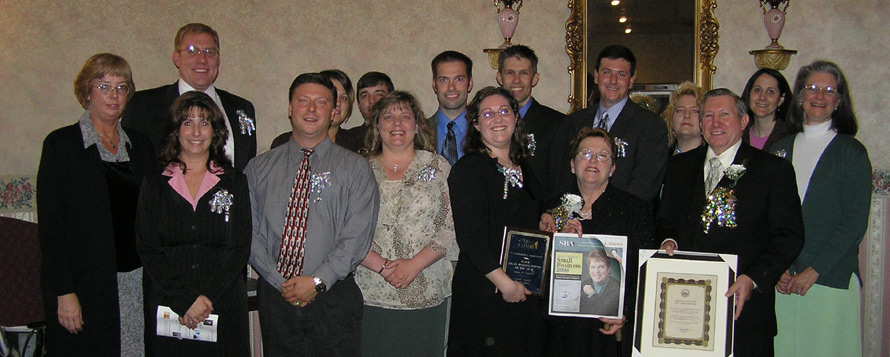
The Olde Mill Place in North Vassalboro
More needs to be done to achieve $250,000 estimate for repairs to the roof damaged in October storm
Vassalboro’s “SAVE THE MILL” Campaign and Ray Breton thank all of who were involved in hard work and donations towards repair of the roof of the Olde Mill in downtown North Vassalboro! The $7,000 mark has been reached, and they still have a long way to go!
As many of you know, The Olde Mill, in downtown North Vassalboro, sustained significant roof damage as a result of the storm of October 28 – 29, 2017. The estimate for repairs is $250,000.
The mill is owned by Raymond J. Breton. Ray shares the mill with the town.
Vassalboro Days events are held there. Halloween at the Olde Mill is an annual event.
The Community Christmas Tree and lighting ceremony are held there.
The mill houses 2,000 rubber ducks and then hosts the Double Dam Ducky Derby.
The mill serves as storage for the 100 flags that fly along Maine Street each summer.
The Vassalboro Fishing Derby is held there, as are many of theVassalboro Business Association’s Scholarship Fundraisers.
Baseball and softball training occurs upstairs all winter long.
The Girl Scout’s Annual Cookies Storage and Distribution is all at the mill.
There is a clothing closet for the local food pantry to store clothing for those in need.
These and many other community events are hosted by Ray at the mill for no charge.
Ray has created a picnic park, a brookside gazebo, and a swimming hole with life vests, canoes, a float, and slide for the town to use for free. He has created a children’s playground on the property as well as several areas for playing basketball.
Ray’s properties are noted for their psychic richness. He leads many tours through his buildings and donates those proceeds to the Vassalboro Food Pantry.
Downtown North Vassalboro has undergone a huge and beautiful transformation in the last eight years because of Ray.
Now he needs our help. There is no insurance on the mill. Ray and his friends and crew work very diligently to maintain the building, but this storm was too much. In order to save the mill, the roof will need to be repaired or else ice and rain will ruin the mill structure. Right now, after many hours of patching, the roof is rigged with tarps and tar to hopefully keep as much of the weather out as possible. But by spring, real repairs need to happen.
Many have donated anonymously at the Vassalboro branch of Maine Savings Federal Credit Union to the “Save The Mill” account. They should know their gifts are truly appreciated.
Heartfelt thanks go out to Nate Gray, Bill and Deb Johnson, Harriet Stamler, William and Betty Branch, AgMatters LLC, Dawn Cates, Tim and Debbie Giroux, Luc Beaulieu, Evan Shorey, Rocky Gravel, Margaret Dowdy, James Ashton, Jacquelyn Murphy, Frank Reynolds, Peter and Jackie Reny, Kaitlin Hosea, Robert Nixon, Judith Davidson, Kelsey Houston, James Breslin, Laura, William Whitman, Vassalboro Retired Teachers and Friends, Leonard Poulin, Lucille Roy, Richard Desmond, Juliette Akins, Carol Axtell, Chris and Amy French, the Watson Family, Kimberly Kimball and friends, and In Memory of Thelma Rancourt, and The Town Line newspaper.
Extra-special thanks also go out to the movers and shakers behind the scenes, including Don, Lisa, and Jessica Breton, Linda Ellis, Mike Vashon, Darrell Gagnon, Tiffany Luczko, Meridith Cain, Therese Burns Barnett, Victor Esposito, Stacy Thorndike, the Titus family, April Stitham-Woodbury, Johnny and Becky Goodrich, and Mr. and Mrs. Dan Rodrigue.
Vassalboro is a small town of 4,320 and so many are involved with this campaign. If we have accidently omitted your name, we are sorry. Your help is so important and needed.
We cannot forget the thousands of dollars of items donated for the raffles going on to benefit the work!
The fundraising continues! Please mark your calendar for the following events, all of which will benefit the mill:
- Saturday, Dec. 30, from 6 p.m. on, the Taylor Road Band Benefit. Tickets are $15/person. It is a concert and potluck at the mill! Call Darrell Gagnon at 649-3626 for more information.
- Sunday, January 21, from 4 – 6:30 p.m.. spaghetti supper and huge raffle at Vassalboro Community School. Supper Tickets are $5. Contact Meridith Cain at 458-2075
- Sunday, February 11, from 10 a.m., the American Woolen Mill Urban Mountain Bike Fundraiser at the Mill. https://www.bikereg.com/vassalboro-mill-fundracer for more information.
- Sunday, February 11, from 1 – 5 p.m., Vassalboro’s Annual Fishing Derby and Huge Raffle at the mill! Tickets are on sale now! Contact Linda Titus at 631-3303.
- Saturday, April 7, from 8 a.m. – 2 p.m., at the mill participate in Vassalboro’s First Indoor Yard Sale! Contact Stacy Thorndike at 446-2690 to reserve your space!
- Saturday, April 21, from 6 to 11 p.m., a Public Paranormal Investigation by G.R.I.M. Tickets are $35 each and available from https://ghost-research-and-investigations-of-maine.ticketleap. com/save-the-mill-public-paranormal-investigation/
To keep up with all the fun-raising, please check out our “SAVE THE MILL” page on Facebook! Thank you. https://www.facebook.com/groups/787714818075573/.
 Care & Comfort, a leading provider of Home Health and Behavioral Healthcare, was recently recognized as one of Maine’s best employers for workers over the age of 50 for 2017 by the Maine State Workforce Investment Board’s Older Workers Committee.
Care & Comfort, a leading provider of Home Health and Behavioral Healthcare, was recently recognized as one of Maine’s best employers for workers over the age of 50 for 2017 by the Maine State Workforce Investment Board’s Older Workers Committee.














